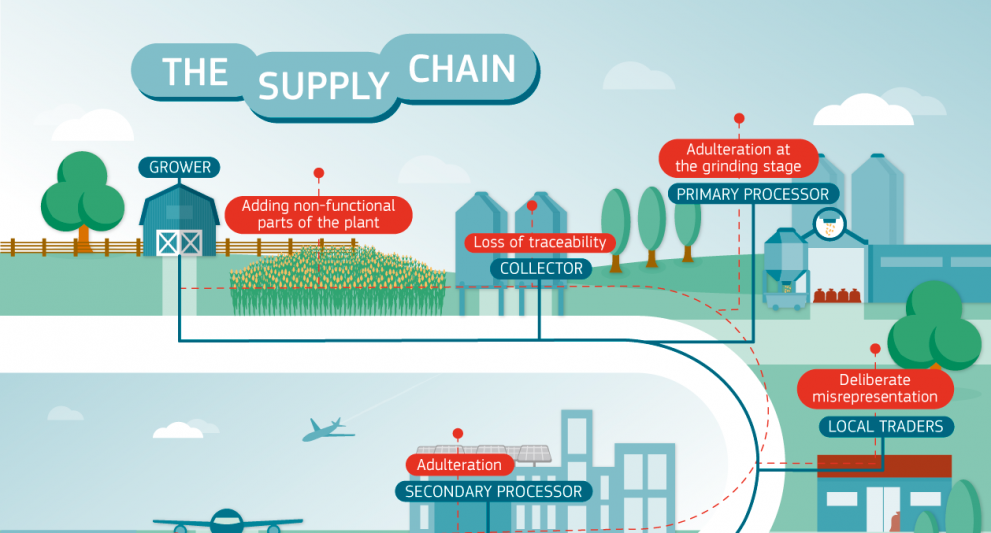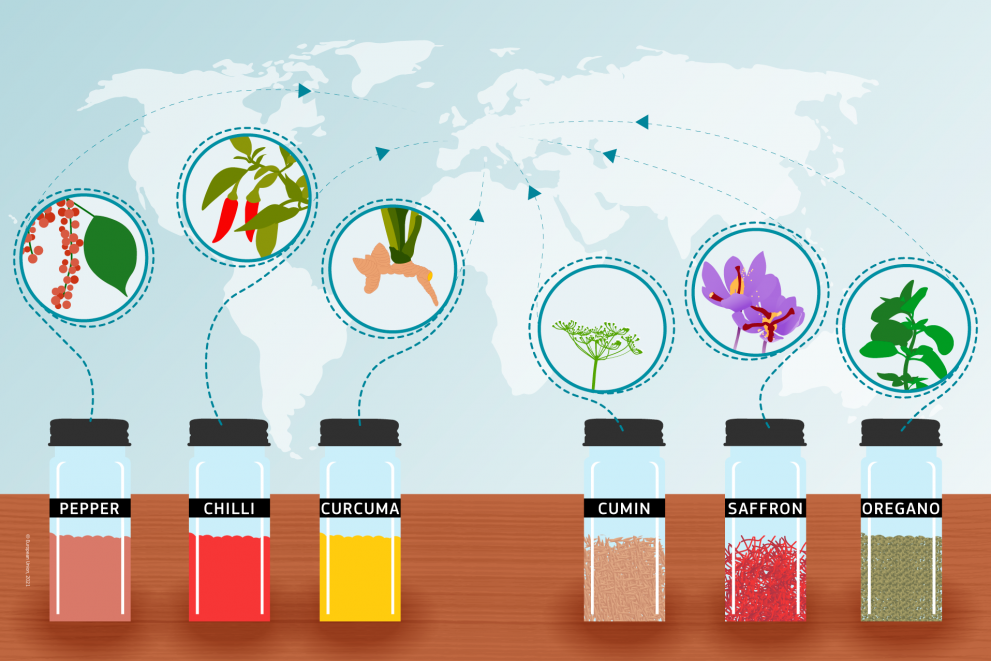
The European Commission published today the results of the first coordinated control plan on the authenticity of herbs and spices launched by the Directorate-General for Health and Food Safety.
It has been carried out by 21 EU Member States, Switzerland and Norway, with the technical support of the Joint Research Centre, which performed nearly 10,000 analyses. The plan is the largest investigation so far into the authenticity of culinary herbs and spices in terms of participating countries and samples analysed (1885).
EU – large importer of spices; EU citizens – concerned about their authenticity
The EU produces around 100.000 tons of herbs and spices per year, and imports annually over three times this amount, mostly spices, from Asia, Africa, Latin America and the Caribbean. In 2019, the EU Member States imported 379 000 tonnes of spices from non-EU countries.
61% of Europeans responding to a 2020 Special Eurobarometer were concerned about being misled about the true qualities of a food, while 55% were concerned about the risks that it might represent for their health (source: Making our food fit for the future – new trends and challenges - Summary - EN - PDF - 1.40 MB). Four in ten Europeans mentioned that they want to be as confident in food imported into the EU as that produced in the EU (40%).
A coordinated control plan to identify the scope of frauds on the European market
In an effort to tackle eventual malpractices, the European Commission set up this coordinated control aiming to make an inventory of the scope and size of non-compliances and of illegal practices into marketing of herbs and spices on the European market.
The study showed that 17 % of the herbs and spices analysed were suspicious of being adulterated, the oregano supply chain being the most vulnerable – half of the samples were suspicious of being adulterated, mostly with olive leaves, followed by 17% of the samples for pepper, 14% for cumin, 11% for curcuma, 11% for saffron and 6% for paprika/chilli.

Several manipulations possible within the complex supply chain
Fraudulent manipulations may happen at each stage of the process, from production, the shipping, processing, etc., until the product reaches the market. Among the most common manipulations are:
- ingredients, additives, dyes or any other constituent not approved for use in food and/or herbs and spices;
- ingredients, additives, dyes or any other constituent approved for use in food but unlawfully not declared or indicated in a form which might mislead the customer;
- spices or herbs that has had any valuable constituent omitted or removed which misleads the customer (e.g. spent and partially spent spices and herbs, de-oiled material, defatted material);
- a different part of the same botanical plant, rather than the one declared to an extent that this is misleading the customer;
- technically avoidable amounts of parts from other botanical plants than the one declared.
The majority of suspicious samples identified by the study contained non-declared plant material; in 2% of the analysed spice samples non-authorised dyes were detected. One sample contained a high level of lead chromate.
Food inspection authorities can profit from the results of this study, allowing them to better target control activities to combat food fraud and deter fraudulent practices for the benefit of honest businesses and European consumers.
Related Content
Knowledge Centre for Food Fraud and Quality
Coordinated control programmes, information and data collection
Results of first EU-wide survey about herbs and spices authenticity
Details
- Publication date
- 25 November 2021
